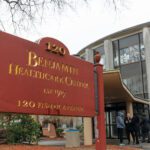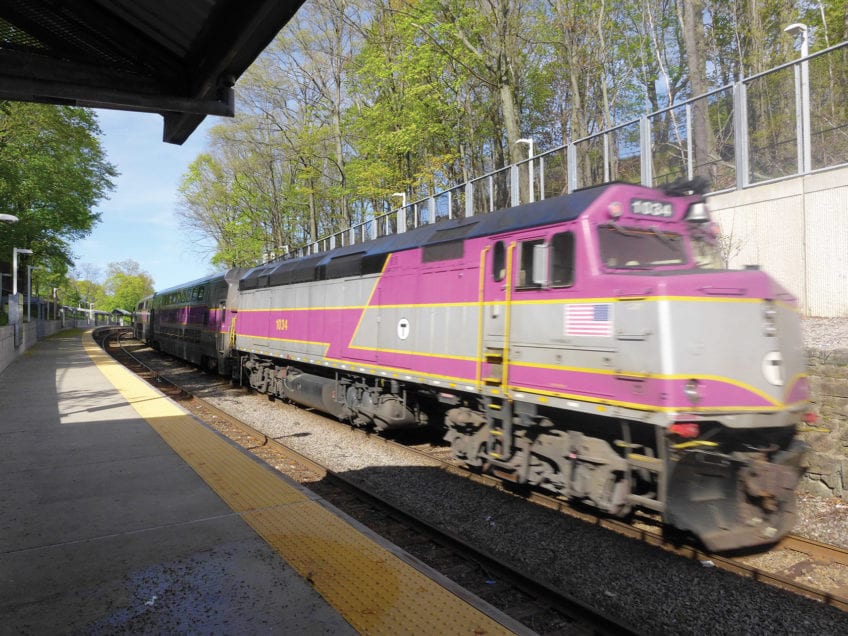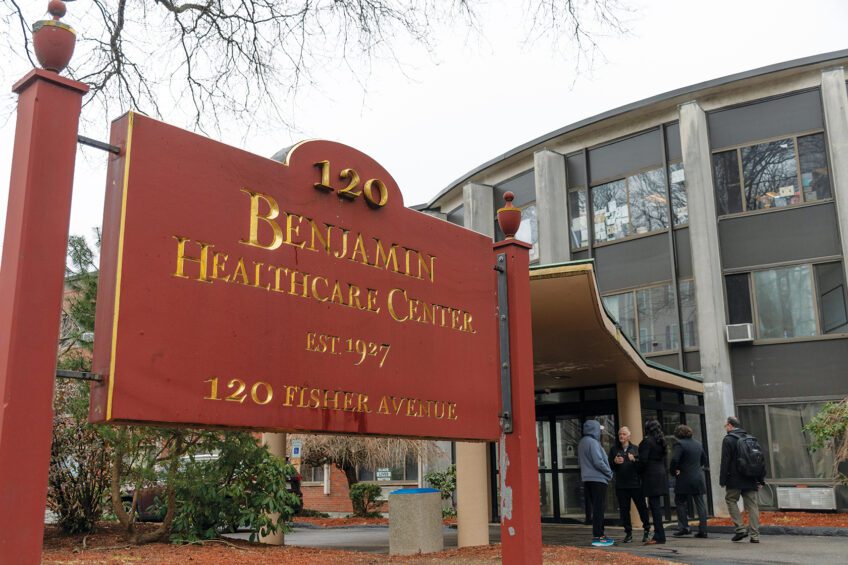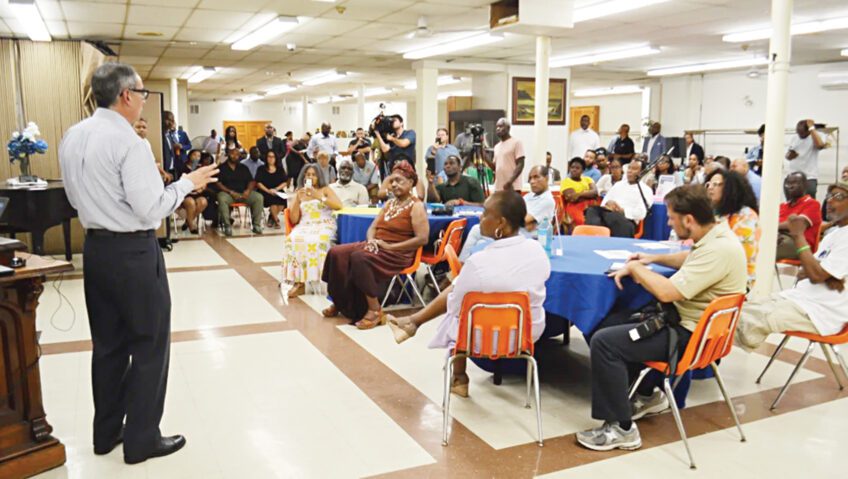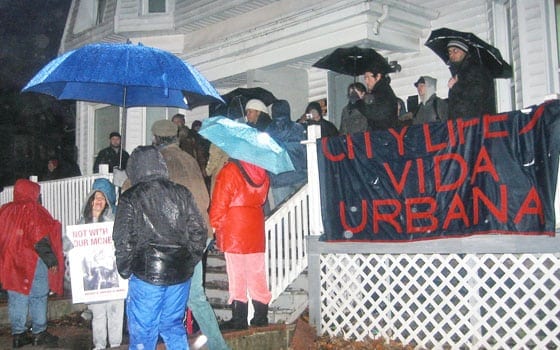
Braving rain, wind and cold, more than 80 people marched and rallied in Dorchester’s Four Corners neighborhood to bring attention to the large number of foreclosed and vacant housing units in the area and to voice anger at the banks that control the properties.
“The Four Corners area has been particularly hard hit,” said Steve Meacham, director of tenant organizing at City Life/Vida Urbana.
The Jamaica Plain housing advocacy group led the protest along with the Greater Four Corners Action Coalition. Meacham provided a map showing 113 addresses where people are fighting foreclosures and evictions in the Four Corners area.
Billed as a “social, political and artistic intervention,” the three-hour event included a rally in front of 21 Bullard St., a march through the neighborhood and a video art installation projected in the windows of vacant apartments, displaying shadow images of people who have been through foreclosure.
Boston City Councilor Charles Yancey and longtime Boston activist Mel King were among the participants.
The protestors called on banks that own foreclosed homes to sell them to occupants (former owners or tenants) or to non-profits that can rent out the units or form cooperatives. They decried the number of units left vacant by banks who continue to hold onto them rather than sell at the current market value, which is often far below the amount of the foreclosed owner’s mortgage.
“We don’t want to live for free, we want to pay [market value], stay in our homes, build our community,” said Tisa Taylor, speaking with a megaphone to a crowd shivering under umbrellas. “But the greedy banks…When our neighborhoods are flourishing, they want to set up their banks and get our money. Now they don’t want to work with us.”
Taylor described how her father became ill while under the stress of possibly losing his home to foreclosure.
“My dad had a stroke over this crazy, greedy bank that wanted to take the house and board it up. This man worked one job for 30 years, worked all his life to keep his home,” she said. “We are not numbers — we are people, and we’re hurting.”
Silhouettes moved in the house’s windows, serving as reminders of the real people who once called these apartments home. The video projections were part of an installation by artists John Hulsey and Ilaria Minio Paluello.
Hulsey, a graduate student in the Visual and Environmental Studies program at Harvard University, said the artists set up a screen, cameras and lights and invited people to retell and re-enact their stories — what it was like to live in their homes and what happened when they went into foreclosure.
“I think of this as a virtual occupation campaign,” Hulsey said. “The shadows are visible traces of the lives that were led in homes…and now aren’t being led.”
Inside the house, another part of the art installation played the recorded voices of people telling their foreclosure stories.
A man’s voice described the care and attention he and his partner Frank invested in their new Roxbury condo to make it a beautiful home. That was before the partner became ill and began a long, financially draining battle with cancer. When Frank died, the man was left alone, grieving and unable to keep up with the mortgage.
“We wanted to address the particularities of each person’s experience, and also abstract it a bit,” said Hulsey, “so it’s not so embedded in one person’s life, but in many people’s lives.”
City Life/Vida Urbana was founded 35 years ago to help tenants organize against rent increases and unfair landlords, but as foreclosures have ravaged the city’s poorest neighborhoods, the organization has directed much of its energy to stopping post-foreclosure evictions, protesting against the banks and bringing attention to neighborhoods and streets riddled with empty houses.
During the past three years, the group has brought support and legal help to a large Bank Tenant Association made up of people experiencing foreclosure. The name reflects the idea that all inhabitants of bank-owned homes — both renters and former owners — are now “bank tenants.”
One of City Life’s tactics is to hold “eviction blockades” at homes on the day a sheriff or constable is set to forcibly remove the occupants. Right now, Meacham said, their blockade list includes five locations from which families are scheduled to be evicted in the next 30 days.
Saturday night’s protest was part of a newer “block rebellion” strategy to publicize clusters of foreclosures rather than one on a specific property.
The first block rebellion was held last September on Cobden Street near Egleston Square, a short street that had 16 foreclosed units, many of them vacant. Since that protest, Meacham said, 15 of those units have been purchased or are in negotiations to be purchased by Boston Community Capital (BCC), a local non-profit lender partnering with City Life, and most are now occupied by renters or owners.
During the Cobden rally, Frances Louis, who had lost her Mattapan home to foreclosure in 2008, began an occupation, with her 10-year-old son, of one of the vacant bank-owned units.
At the Bullard Street rally, Louis gave an update. She said after BCC negotiated with the bank to purchase the unit she was occupying, she was able to move in officially in February as a tenant. It’s been a turbulent period for her and her family, but she is relieved to have a place to call home.
“I was praying on it,” she said.



